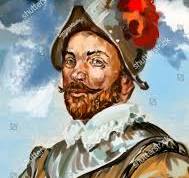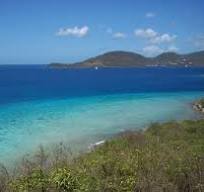Drake’s Legacy: Exploring Francis Drake’s Influence on the Virgin Islands
Sir Francis Drake, renowned as a fearless explorer, cunning privateer, and celebrated naval commander, left an indelible mark on history through his audacious exploits across the high seas during the Elizabethan era. His legacy intertwines with the Virgin Islands, a chain of paradisiacal isles scattered amidst the azure waters of the Caribbean. To unravel the intricate relationship between Drake and these enchanting islands, one must embark on a voyage through time, navigating the turbulent currents of history and the shimmering vistas of myth and legend.

Sir Francis Drake
Born around 1540 in Tavistock, Devon, England, Francis Drake was destined for a life of maritime adventure. His early years were marked by the maritime traditions of his family, which included mariners and clergymen. At the tender age of thirteen, Drake embarked on his seafaring odyssey, serving under the tutelage of his cousin, Sir John Hawkins, a prominent slave trader and naval commander. This formative period instilled in Drake a profound understanding of seamanship, navigation, and the harsh realities of life at sea.
Drake’s seafaring career reached its zenith during the late 16th century when he embarked on a series of daring expeditions that would immortalize his name in the annals of history. One of his most famous voyages, the circumnavigation of the globe aboard the Golden Hind from 1577 to 1580, catapulted him to legendary status and earned him the moniker “El Draque” (the Dragon) among the Spanish.
The Virgin Islands, an archipelago comprising over fifty picturesque isles, served as a backdrop for Drake’s maritime endeavors and strategic maneuvers during his illustrious career. Situated in the northeastern Caribbean, these islands bore witness to the ebb and flow of European colonial ambitions, piracy, and maritime trade during the Age of Exploration.
Drake’s association with the Virgin Islands is primarily linked to his exploits as a privateer commissioned by Queen Elizabeth I to harass and plunder Spanish galleons traversing the Caribbean. In the tumultuous geopolitical landscape of the 16th century, the Spanish Empire reigned supreme, controlling vast territories and maritime routes across the Americas. Drake’s audacious raids struck at the heart of Spanish power, disrupting their colonial operations and enriching England’s coffers with plundered treasure.
One of Drake’s most notable encounters in the vicinity of the Virgin Islands occurred during his circumnavigation voyage. In 1580, while sailing along the eastern coast of present-day Puerto Rico, Drake’s fleet encountered a violent storm that scattered his ships. Seeking refuge from the tempest, Drake and his crew sought shelter in the protected bays and coves of the Virgin Islands. It was here that Drake’s legendary resourcefulness and seamanship were put to the test as he navigated the treacherous waters and sought to reunite his scattered fleet.
The Virgin Islands, with their labyrinthine channels and hidden anchorages, provided Drake with a sanctuary from the wrath of the elements and the pursuit of Spanish warships. Amidst the verdant hills and azure lagoons, Drake and his crew found respite and replenished their provisions before resuming their perilous journey across the vast expanse of the Caribbean Sea.
Drake’s presence in the Virgin Islands left an indelible imprint on the collective consciousness of the region, inspiring tales of adventure and daring among future generations of seafarers and settlers. His exploits, immortalized in the epic narratives of his contemporaries and subsequent generations of historians and storytellers, transformed him into a legendary figure whose name became synonymous with courage, tenacity, and audacity.
Beyond his exploits as a privateer and naval commander, Drake’s legacy in the Virgin Islands is also intertwined with the broader historical narrative of European colonization and the encounter between different cultures and civilizations. The arrival of European explorers like Drake heralded a new chapter in the history of the Caribbean, bringing with them waves of conquest, colonization, and cultural exchange that would shape the destiny of the region for centuries to come.

Looking across the Sir Francis Drake channel to Tortola
In the centuries that followed Drake’s voyages, the Virgin Islands witnessed the ebb and flow of colonial powers, changing hands between the Spanish, Dutch, English, and Danish empires. The strategic significance of these islands as a gateway to the riches of the New World ensured that they remained a coveted prize in the geopolitical struggles of the era.
Today, the legacy of Sir Francis Drake lives on in the rich tapestry of history and heritage that defines the Virgin Islands. From the bustling ports and vibrant communities to the secluded bays and pristine beaches, his spirit endures as a testament to the enduring allure of the sea and the indomitable spirit of exploration that continues to captivate the imagination of adventurers and dreamers around the world.
In the hushed whispers of the trade winds and the gentle lapping of the waves against the shore, one can still hear echoes of Drake’s epic voyage echoing across the ages, a reminder of the timeless bond between man and the boundless expanse of the ocean that has beckoned explorers and adventurers since time immemorial. Sir Francis Drake may have sailed into the mists of history, but his legacy lives on, woven into the very fabric of the Virgin Islands and the countless tales of adventure and discovery that continue to unfold beneath the Caribbean sun.
